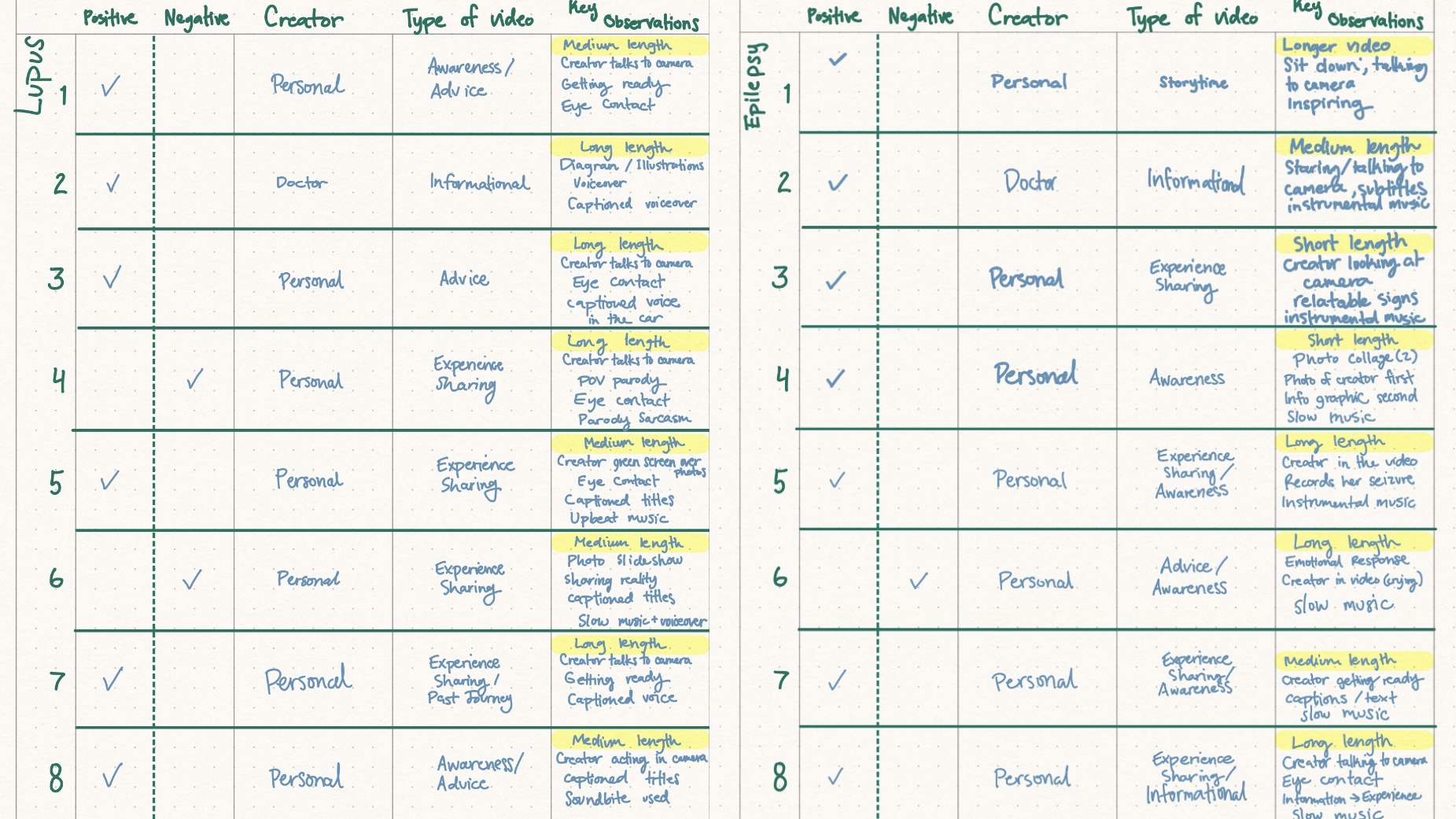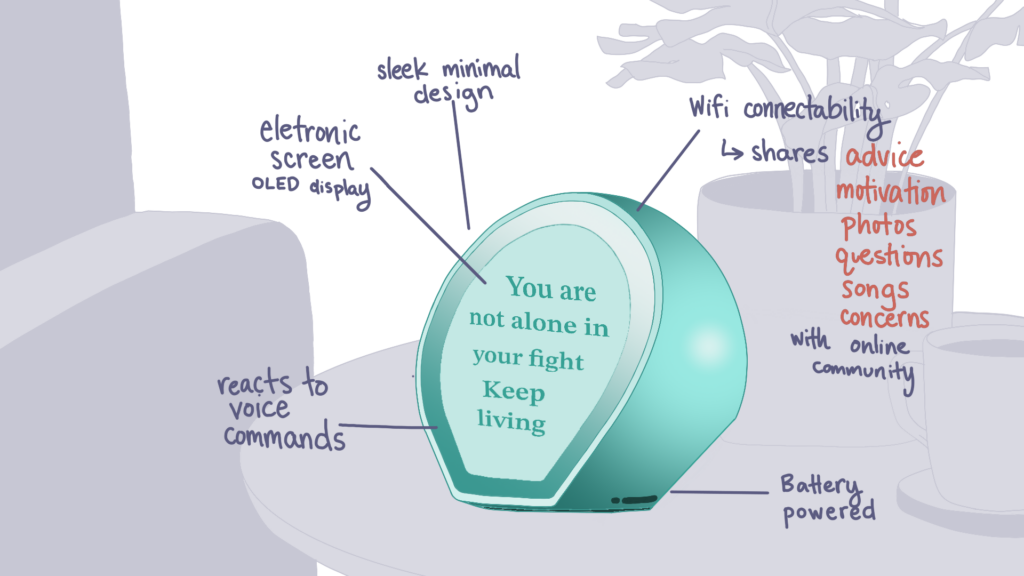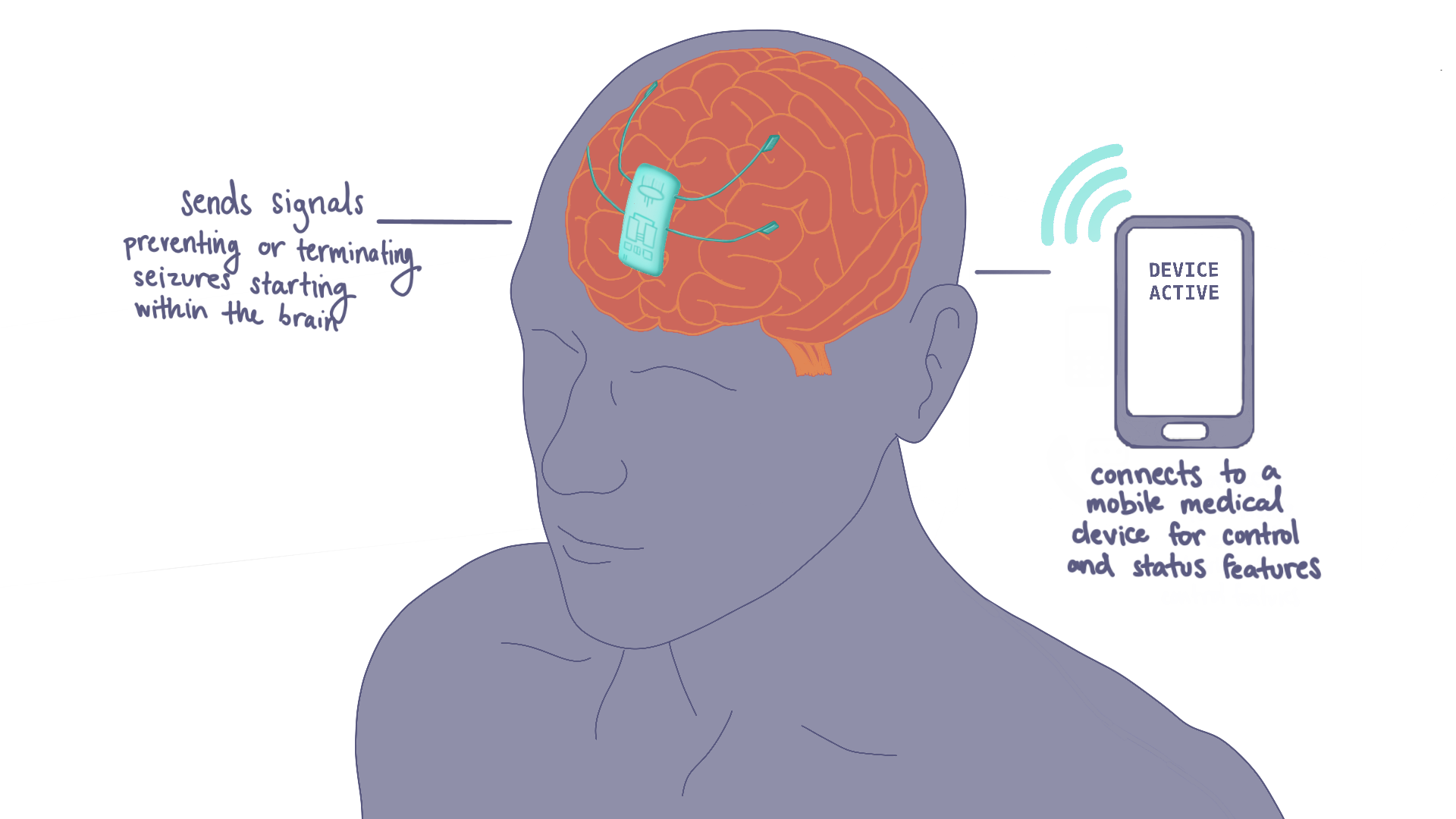Author: Emma Bergman
Published September 23, 2024
Trigger Warning: Epilepsy/Seizures
Imagine your loved one calls you.
They are home alone.
You can hear their discomfort.
You can hear their voice shaking.
They are panicking.
They think they are going to have a seizure.
They are in the bathroom and lying on the floor immobilized.
You can hear your dog is concerned whining outside the door.
They can’t move and get help.
Their medication is not in the room.
It could stop this seizure from continuing.
They can’t get to it.
You can’t get home in time to get it.
They are going to have this seizure.
You can tell it is going to be a serious one from the the rapid onset of symptoms.
You can call 911 but you don’t know how fast they can get there.
Their body is shaking.
They don’t answer your questions anymore.
The medics would have to break the lock, down the door, the window, and then find them in the house.
You can hear their body convulsing.
You call 911.
It’s getting worse.
You can’t hear anything anymore.
Some people do not have to imagine it. This is the reality of many loved ones with epilepsy and individuals experiencing epilepsy. It is the reality of the young girl, Sophia, in the video.
I came across this video a few weeks ago, it struck me. I watched it twice. I had never seen a seizure, in person or online filmed. The video was hard for me to watch. When the convulsions started, I felt uncomfortable. I had never seen anything like this up close and not in a TV show. I felt like I needed to help her, fully aware this video was filmed and posted previous to the current moment.
Some chronic conditions are like the never ending math problems. You keep solving it and think you have the correct answer, you are confident. It’s not quite right. You check your work; you missed something. There’s new variable you didn’t see before. But you had already been solving for the other problem. You can’t seem to find the right solution and you have been trying for so long already. I should know, I have a chronic condition. Now I don’t have epilepsy, but I think there is a shared experience among many people with chronic conditions of frustration and endurance.
Keeping my research centered where my interest initiated, I went to TikTok for a deeper dive into how medical conditions were portrayed on this platform. Acknowledging TikTok is a social media platform that uses algorithms catered to my interests and data, this research would still provide compelling insights on how the user population is exposed to information on health and wellness. Conducting my primary research, I found a theme of personal and emotional connection among the chronic health community. Creators use this tactic to relate to their audiences and make them feel as though they have personal relationship with the creator. Some techniques used were eye contact, slow/instrumental background music, and creators body being present in the center of frame. They used personal experience sharing and awareness videos to boost their viewers trust and make them feel a strong companion type relationship. It works to; these videos feel more casual but yet more impactful and memorable than if I were to read a news article about a health condition. TikTok can be used as a method of education through entertainment.

TikTok draws millions of people in each day to scroll for hours. Why? It’s a place of comfort. These creator provide a safe space for one to go. They feel related to on a personal level and will choose to spend their free time with these creators. People are drawn to comfortability. Comfort is a large focus in designing healthcare. But not just the physical comfort, the mental comfort as well. An epileptic artist named Zach Beckemeyer described his experience with finding a comfort within the art world; “The thing with artwork is that it was helping out the physical problems I was having, such as the shakiness and the tremors. But all of my perspective … it was a deep concentration on an entirely new universe and … it was some kind of a high that I got out of it” (Nyugen, 2022). Comfort can come from exploring the needs that are being ignored. In Zach’s case, he felt concealed by his epilepsy and when he was accepted by a community with peers, he finally felt his own comfort in the public. Comfort in the home is prioritized with my Arts Design Conjecture. Patients feel a sense of community with this compact device and connection with their community even when apart. Placed in the home, this communication device can share and receive messages, photos, music and other media to others in one’s healthcare circle.

Comfort is mental and physical. But it can also be both at the same time. My focus design conjecture puts into play both factors to make an emerging piece of technology that could transform the epileptic community. The frontal lobe signaling device eliminates the need for drugs as a form of medication. Drug delivery is not accepted by all forms of epilepsy. Only about 30% of all people with epilepsy can control their seizures with medication. (Proctor et al., 2022) Could combining the comfort of mind and an effective device into one change the epileptic community? Even switching from generic to trade named can cause a relapse of seizures (Poitras, 2012). The concerns of safety in the epileptic community are high. How can a product accommodate to their concerns?

Accommodations need to be made for the patients, for the caregivers of the patients and for the industry of epileptic medical devices. The patients are first and foremost; they are the ones being treated and will experience the most change. Prioritizing their comfort is top of the list. Caregivers and caretakers, like the nurses authorized to administer emergency anti-seizure medicine to children at school, (Smith, 2022) are affected as well. How can they best assist their epileptic community. Industry has needs that should be addressed in designs as well. This design has to be marketable and up to the standards of Battelle, my sponsored partner. Battelle has industry rules and regulation that need to be met by all their products and services.
Acknowledging the comfort I experience everyday, is the starting point to solving this problematic. What comforts do I enjoy that not everyone can? What comforts can people with epilepsy not enjoy because of their condition? Maybe they find comfort in other ways that I could not fully understand because I am not in their shoes. I am not epileptic. I could get a call from someone that is and they could be having a seizure. How am I providing them comfort without being in their position? How can I provide Sophia comfort? Comfort in design is a broad topic. It can be stretched many ways. In the scope of healthcare, how is comfort an affordance? The healthcare community has its set ways. There are rules and standards for safety, for legal purposes, for protocols and medical knowledge. Are there any for comfort? Is comfort prioritized in their own specific ways? Has the healthcare community put comfort on the backseat to prioritize more lucrative avenues of the business. We even see uprising of comfort in new social media platforms like TikTok. A casualness that has been missing the from the health care world for a long time. A personal connection that brings the person out from behind the patient. Creators are sharing experiences directly to others who need to be informed or can already relate. There is a reason why people flock to this social media platform, is it because the comfort we receive from it?
How can the personal and casual empathy we see on TikTok be brought into the the medical device discipline.
When designing a healthcare device, how can relational comfort and personal connection make the product more effective?
How can comfort be demonstrated and prioritized in a medical device for epilepsy?
The device needs to be functional and implantable in the patient, as specified by Battelle. The top priority is the relief of the patient. Epilepsy is already a stressful condition, with fears of resurfacing seizures and drugs delivery not always being effective, patients need a relief in their future. Something they can count on that won’t drag on like that chronic math problem. Consistency goes hand in hand with comfort. Providing a constant for their journey of unknowns might be the only relief.
References
Nguyen, L. (2022, September 24). Artists bring “hidden truths” of epilepsy to light in art exhibition at Marina Park. Los Angeles Times. https://www.latimes.com/socal/daily-pilot/news/story/2022-09-24/artists-bring-hidden-truths-of-epilepsy-to-light-in-art-exhibition-at-marina-park
Poitras, C. (2012b, March 5). Study: Switching anti-epileptic drugs could increase risk of seizures. UConn Today. https://today.uconn.edu/2012/03/study-switching-anti-epileptic-drugs-could-increase-risk-of-seizures/
Proctor, C. M., Slézia, A., Kaszas, A., Ghestem, A., del Agua, I., Pappa, A.-M., Bernard, C., Williamson, A., & Malliaras, G. G. (2018). Electrophoretic drug delivery for seizure control. Science Advances, 4(8). https://doi.org/10.1126/sciadv.aau1291
Regan, S. (2023). How To Actually Comfort Someone You Love, From Therapists. photograph. Retrieved September 24, 2024, from https://flipboard.com/article/how-to-actually-comfort-someone-you-love-from-therapists/f-11daa3a498%2Fmindbodygreen.com.
Smith, L. (2022, December 10). New law authorizes school staff to administer emergency anti-seizure medication. ACSA Resource Hub -. https://content.acsa.org/new-law-authorizes-school-staff-to-administer-emergency-anti-seizure-medication/
Sophia Paige.[@strivewithsoph]. (2024, August 12). Tiktok please don’t censor or take down this video. This is for epilepsy awareness and I’ve provided a clear content [Video]. TikTok https://www.tiktok.com/@strivewithsoph/video/7402134944765447466



